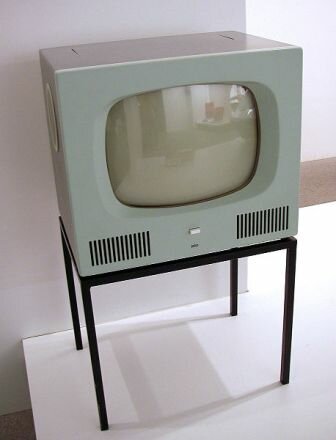One of these following facts about television might give you much information about it. Television is telecommunication medium that is used for transmitting and receiving moving images and sound. In a broader sense, television can also refer to images that are monochrome (black-and-white) or color, or images with or without accompanying sound. Televisio may also refer specifically to a television set, television program, or television transmission. To get to know more about television, here are some other facts about television you might be interested in.
Facts about television 1: Availability of Storage Media
The availability of storage media such as video cassettes (mid-1970s), laserdisc (1978), DVDs (1997) and high-definition Blu-ray Disc (2006) then enabled viewers to use the television set to watch recorded material. Internet television has seen the rise of television programming available via the internet through services such as iPlayer, Hulu, and Netflix.
Facts about television 2: Development
In 2009, 78% of the world’s households owned at least one television set, an increase of 5% from 2003. The replacement of CRT technology with various flat-panel televisions using LCD, plasma or LED screens was a major change in how television sets operated. In 2013, 87% of televisions sold had color LCD screens.
Facts about television 3: Broadcast Television
The most common usage of television is for broadcast television, which is modeled on the radio broadcasting systems developed in the 1920s. Broadcast television uses high-powered radio-frequency transmitters to broadcast the television signal to individual television receivers.
Facts about television 4: Modern TV
All modern TV systems relied on the latter, although the knowledge gained from the work on electromechanical systems was crucial in the development of fully electronic television.
Facts about television 5: Concept
The concept of electrically powered transmission of TV images in motion was first sketched in 1878 as the telephonoscope, shortly after the invention of the telephone. At the time, it was imagined by early science fiction authors, that someday that light could be transmitted over copper wires, as sounds were.
Facts about television 6: Color TV
Color TV is part of the history of television, the technology of television and practices associated with television’s transmission of moving images in color video.
Facts about television 7: Programming
Getting TV programming shown to the public can happen in many different ways. After production, the next step is to market and deliver the product to whatever markets are open to using it.
Facts about television 8: Funding
Around the globe, broadcast TV is financed by either government, advertising, licensing (a form of tax), subscription or any combination of these. To protect revenues, subscription TV channels are usually encrypted to ensure that only subscription payers receive the decryption codes to see the signal.
Facts about television 9: Advertising
TV’s broad reach makes it a powerful and attractive medium for advertisers. Many TV networks and stations sell blocks of broadcast time to advertisers (“sponsors”) to fund their programming
Facts about television 10: Taxation or License
Television services in some countries may be funded by a television license or a form of taxation which means advertising plays a lesser role or no role at all. For example, some channels may carry no advertising at all and some very little.
Hope you would find those television facts really interesting and useful for your additional reading.










 www.PortlandPayday.Loans
www.PortlandPayday.Loans